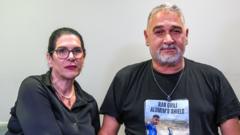Pharma Distribution M&A Opportunity
Having unlocked the next case study of this Theme Vitrine , here is the deal:
Mongolia
“Mongolia’s land area is roughly equivalent to that of the countries of western and central Europe” and it is surrounded by other giants in the form of China, Russia and Kazakhstan. Yet it has only 3.3 million people and 4x the sheep heads.
Its main economic activity and driver is mining with a share of almost a quarter of the GDP. For example: “Oyu Tolgoi is one of the largest known copper and gold deposits in the world”It is largely an export-import-dependent nation with the bulk of its exports sold to China in the form of coal and copper, both having negative direct land & indirect health effects from excavation.By contrast, health and education have been focal to every government in Mongolia (all democratically elected since the 90s!), with the healthcare expenditure rising to over $500 per capita.Despite state-owned health facilities being a regular occurrence in Mongolia, the private sector has grown in importance. So for example, even the former state incumbent distributor MEIC (Mongol Em Impex Concern established in 1923) was privatized to Bishrelt Holding in 2006.
Mongolian pharma market is formed by:
40 local producers
Local production mainly consists of small producers producing old generics, traditional medicines & vitamins, with Monos and some foreign JVs being exceptions rather than a rule
120 wholesalers
Top 10 wholesale pharma distributors / importers take over 80% of the market: MEIC, Monos, Asiapharma, Ento, Europharma, Munkhiin Tun, Dakalpharma, Ombol, Monpha Trade, Tsahiur Tomor
1,300 retailers
250 outlets within state-owned hospitals, 250 pharmacies part of a chain/retail network such as Monos, and the rest independent outlets licensed by individual pharmacists
60 source-countries of imports
Russia, Germany, Slovenia, Hungary, India, Bulgaria, France, Austria, S.Korea, China… (most of the raw material comes from China and S.Korea)
An estimated 15-20% of pharma products are sold illegally in the country, a similar estimate to that of Kyrgyzstan pharma market.

Photo:BH
Mongolia’s pharmaceuticals sector has doubled over the last decade, from about $60mil to about $100mil, depending on the definition. This translates to +/-$30 per capita, still leaving a significant upside to catch up to comparable peers. So for example this in line where neighbouring Kazakhstan @ $32/cap was 12 years ago.
All in line with pharma consumption being very much related to increasing living standards, whereby health consciousness translates to a stronger demand for preventive medicine, food supplements and vitamins.
Currently, Mongolian drug consumption is still very much a developing world type, with the top five categories being antibiotics, digestives, cardiovascular, neurotropic & respiratory medicines.
There are seven government bodies or agencies involved in the pharma market regulation, which can be viewed as relatively lenient compared to some peer countries. The following functions and/or periodic (re)licensing / review / approval: licensing of manufacturing, licensing of importation, licensing of wholesale, licensing of retail, product assessment and registration, GMP Inspection, inspection of distribution channels, import control, quality control of products, control of medicines promotion& advertising, price control for the essential list, generic substitution, control of prescribing, technical elements (standards, norms, guidelines, procedures).
Monos is a family business started by brother and sister Luvsan in 1990, as a small pharma & cosmetics workshop producing skin treatment creams, powders and solutions for respiratory diseases using local herbal ingredients.
Being a pharmacologist by training, educated in the former USSR, the brother was an industry insider having worked for the Pharmaceuticals Institute and MEIC, a former state import & distribution monopoly.
It has diversified into other sectors over the last decade but with pharmaceuticals still at its heart. With 1,600 employees and 30 businesses, the group as a whole is a significant contributor to employment and state taxes.

Photo:BB
Monos operates a nationwide wholesale & distribution network, and a pharmacy chain (mainly in Ulaanbaatar and Central Mongolia). It also has a number of drug-, cosmetic- & health-foods-making facilities, which manufacture approx.100 types of medicines including 30 own brands. The retail chain has 90 pharmacy stores, a roughly equivalent amount to the incumbent competitor.
Mr. Luvsan / Monos won a number of state awards including for scientific research on kidneys and immune booster development. Given that the country relies on 80% of its drug consumption from imports, a rare event is that its own brand Nefromon is exported to Russia since 2014. Today the business has a pharma academy and medical research centres for bolstering innovation and future growth.
Production technology, WHO GMP-compliant and financed by the EBRD, allows for manufacturing of plain tablets, coated tablets, galen, capsules, powder, pills, cream, talcum powder, liquid, extract & syrup.
Monos’ pharmaceutical market share is probably at about a third of what is estimated to be just about a $100mil total pharma market, depending on the definition. Whereby being a straight-out leader in local production, which in total accounts for less than 20% of pharmaceutical demand in the country; a joint co-leader in wholesale with the sate MEIC; and a top player in the fragmented retail space.
Probably operating at a consolidated pharma EBITDA of 15-20%, where profitability from better to worse goes from own production to drug wholesale to retail outlets.

Given Mongolia’s landlocked status & relative isolation, its harsh winters with related seasonality, and high import dependence coupled with relative unfavourable supplier terms given the size of the production & overall significance in world markets- pharma business should have a longer asset conversion cycle than some comparable peer countries.
Managing working capital where a lot of cash is tied up, and in particular inventory turnover, is of great importance for its distribution units. At perceived volumes, modernised facilities and installed ERP, inventory days-on-hand should probably aim at (+/-): 100 days for the main warehouse, with logistics sub-points & city outlets at around 25 days, while areas outside Ulaanbaatar should be allowed up to 75 days.
The company should be well bankable (strong fixed asset base, reasonable net debt, predictable & growing cash flow, etc.), if it did not get too playful with the non-core businesses, and should be easily able to organically operate solely with the local financial institutions. It also does not look like that Monos has potential problems with succession, as it remains largely an extended family affair. On the other hand, it could have going public potential.!?
Theme Contribution

Madina Umarova
Experienced consultant with a demonstrated history of working in the industry. Skilled in commercial and nonprofit activity. Strong in business development, HR, marketing and administration.
Madina also is:
- Vice president, head of economic group (CIS), Coordinating Council of Russian compatriots in Croatia
- Founder of the Russian culture club in Croatia
- Teacher of Russian language and literature (& business comm)
And was:
- KPMG senior office administrator
- Professor at Law university
- Club administrator
- Cello instructor
Theme Related Tracker
- How the cheese-noodle principle could help counter Alzheimer'son November 24, 2025
Researchers at the Paul Scherrer Institute PSI have clarified how spermine - a small molecule that regulates many processes in the body's cells - can guard against diseases such as Alzheimer's and Parkinson's: it renders certain proteins harmless by acting a bit like cheese on noodles, making them clump together. This discovery could help combat such diseases.
- New 'sensor' lets researchers watch DNA repair in real timeon November 21, 2025
Cancer research, drug safety testing and ageing biology may all gain a major boost from a new fluorescent sensor developed at Utrecht University. This new tool allows scientists to watch DNA damage and repair unfold in real time inside living cells. The development, which opens the door to experiments that weren't feasible before, is published in the journal Nature Communications.
- The immune system creates its own targets within viruseson November 20, 2025
A new study from the Systems Immunology Research Group at the Institute of Biochemistry, HUN-REN Biological Research Centre, Szeged, reveals that our immune system does more than defend against viruses. In certain cases, it induces mutations within viruses that make them easier to recognize later on. The findings have been published in Nature Communications.
- Targeted drug could benefit young patients with invasive sarcomaon November 19, 2025
A collaborative research team, led by scientists at VCU Massey Comprehensive Cancer Center and Huntsman Cancer Institute at the University of Utah, has identified a targeted drug that could effectively treat an aggressive soft tissue cancer that occurs most often in pediatric and young adult patients. New findings - published in Nature Communications - suggest that blocking a specific genetic pathway could reverse a series of tumor-driving cellular interactions
- Next-generation microbiome medicine may revolutionize the treatment of Parkinson's and similar disorderson November 18, 2025
The age-old advice to “trust your gut” could soon take on new meaning for people diagnosed with Parkinson’s Disease, thanks to a creative feat of bioengineering by researchers in the University of Georgia’s College of Veterinary Medicine. Anumantha Kanthasamy, professor and director of the Isakson Center for Neurological Disease Research (ICNDR) leads a multidisciplinary research team including Gregory Phillips, Piyush Padhi, and other scientists that has engineered a groundbreaking living medicine, a beneficial probiotic designed to deliver Levodopa steadily from the gut to the brain of Parkinson's patients.
- A cellular protein, FGD3, boosts breast cancer chemotherapy, immunotherapyon November 17, 2025
A naturally occurring protein that tends to be expressed at higher levels in breast cancer cells boosts the effectiveness of some anticancer agents, including doxorubicin, one of the most widely used chemotherapies, and a preclinical drug known as ErSO, researchers report. The protein, FGD3, contributes to the rupture of cancer cells disrupted by these drugs, boosting their effectiveness and enhancing anticancer immunotherapies.
- Common gout drug may reduce risk of heart attack and strokeon November 14, 2025
A widely-used, inexpensive gout drug could reduce heart attacks and strokes in people with cardiovascular disease, according to a new Cochrane review. The review examined the effects of low doses of colchicine, a drug used to treat gout, and found no increase in serious side effects.
- New nasal vaccine has potential to transform respiratory disease preventionon November 13, 2025
A research team from Trinity College Dublin has unveiled a groundbreaking new approach to vaccination that could redefine how we protect against respiratory infections. In a landmark study published in Nature Microbiology, the team demonstrated that their nasally-delivered, antibiotic-inactivated Bordetella pertussis (AIBP) vaccine not only prevents severe disease but also curbs bacterial transmission - an achievement long sought by vaccine developers worldwide.
- MIT research finds particles that enhance mRNA delivery could reduce vaccine dosage and costson November 12, 2025
A new delivery particle developed at MIT could make mRNA vaccines more effective and potentially lower the cost per vaccine dose. In studies in mice, the researchers showed that an mRNA influenza vaccine delivered with their new lipid nanoparticle could generate the same immune response as mRNA delivered by nanoparticles made with FDA-approved materials, but at around 1/100 the dose.
- HER2-targeted radioimmunotherapy regimen achieves complete and durable response in breast cancer modelon November 11, 2025
A new radioimmunotherapy approach has the potential to cure human epidermal growth factor receptor 2 (HER2)-positive breast cancer, according to new research published in the November issue of The Journal of Nuclear Medicine. The regimen, which pre-treats the tumor before delivering targeted alpha-radioimmunotherapy, resulted in durable major responses - including histologic cures - with minimal toxicities, paving the way for a safer and more effective treatment option for breast cancer patients.





























